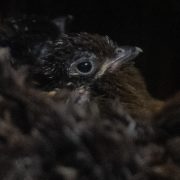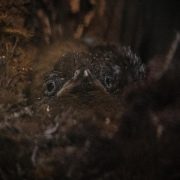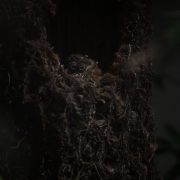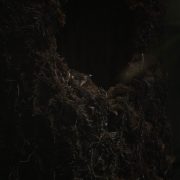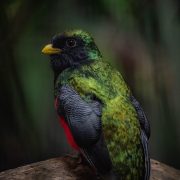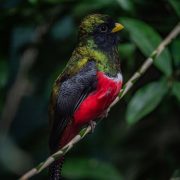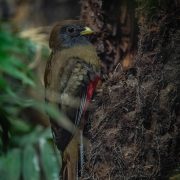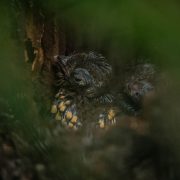Two exotic birds, whose parents were rescued from illegal wildlife traders, have hatched at the zoo.
It is the first time that collared trogon chicks have ever been bred in any of the world’s top zoos. Our bird experts have hailed the arrival of the chicks, and their subsequent fledging, as “really special,” particularly given the astonishing survival story of their parents.
The duo were two of almost 100 exotic birds, from 14 different species, given a safe haven at the zoo after being seized from illegal wildlife traders by customs officials in the Netherlands last year. The birds were destined to be illegally sold as pets.
The illegal wildlife trade is worth an estimated £19billion every year and is the fourth biggest international crime after drugs, arms and human trafficking.
Hundreds of bird species are known to appear in parts of Europe after being taken from the wild in Africa, Latin America and South East Asia. The practice is driving many species towards extinction.
?WORLD FIRST?
After being RESCUED from illegal wildlife traders, these birds have just hatched TWO chicks… a beautiful end to an amazing story ? pic.twitter.com/qgHMoopBWI
— Chester Zoo (@chesterzoo) September 13, 2019
Mark Vercoe, Deputy Curator of birds, said;
“This is a really special hatching. It may very well be the very first time that this beautiful Latin American forest species has been bred in a zoo – there certainly aren’t any other documented breeding successes in any of the world’s leading zoos.
“The collared trogon is understudied and little information exists on the courtship and mating behaviour of the species. However, we’re now able to add to the available data.
“These chicks are particularly precious given the astonishing survival of their parents who we took care of last year. They were part of a huge group of illegally imported birds rescued by customs officials in the Netherlands.
PSSSTT
They had had a traumatic journey and were in a poor state of health when they were first confiscated and sent to us. So, to have not only nursed them back to full health but to have got them to a point where they’re happy and able to raise their own young, is a fantastic feat.
In South East Asia alone, up to 1.3 million birds are taken from the wild each year. The crisis has reached a tipping point with forests now falling silent.
PSSSTT
According to the UN, the illegal wildlife trade is worth billions of pounds each year and continues to grow despite efforts to crack down on it. It’s threatening the future of numerous species globally and it’s important that we attempt to raise as much awareness about the issue as we can. We need more and more people to be the eyes and ears in the fight against the trade.
Andrew Owen, Curator of birds
We’re calling for public help to fight the crisis. Our experts are encouraging people who may be travelling to South East Asia to download the free Wildlife Witness smartphone app, which allows people to report suspicious instances of illegal wildlife trade they might witness, where it is safe to do so.
Those holidaying elsewhere in the world can report any suspicious activity via our online illegal wildlife trade reporting form.
Other species seized from the illegal wildlife trade and given safe haven at Chester Zoo include:
- Orange-cheeked waxbills, native to western and central Africa. Their high-pitched ‘peeps’ are the best clue of their presence. Waxbills are named for the prominent red colour of their conical beaks, which are the same colour as sealing wax.
- The common waxbill, which inhabits open country with long grass and are often found near water in marshes and reeds. It is native to sub-Saharan Africa. Breeding populations have become established in many places where the climate is sufficiently warm and there is a good supply of grass seeds
- The scaly-breasted bulbul, a species of songbird found from the Malay Peninsula to Borneo. It is classed as ‘near threatened’ with extinction by the International Union for Conservation of Nature due to the rate of forest loss from illegal logging, land conversion and forest fires
- The fire-tufted barbet, named for the tufts of feathers above the beak which, on male birds, is a fiery orange colour. They are found in Sumatra, Thailand and Malaysia. The primary threat to this species is illegal capture and trade
- The colourful black-browed barbet which has a scattered distribution across south-east Asia. It excavates nest holes in trees but little else is known about its breeding habits
- The red avadavat which derives its name from the city of Ahmedabad in Gujarat, India, from where these finches were once commonly exported into the pet trade. It originates from tropical Asia and is a popular cage bird due to the colourful plumage of the males in their breeding season.
STOP ILLEGAL WILDLIFE TRADE
Over 96 elephants are killed EVERY DAY for their ivory tusks. Illegal wildlife trade is the greatest direct threat to the future of many of the world’s most iconic species.
SING FOR SONGBIRDS
All over Indonesia forests are falling silent as the songbirds that once thrived there are threatened with extinction. We need your help to make the forests sing again!
